HubbleSpaceTelescope
Latest

Hubble telescope 'mother' Nancy Grace Roman dies
The astronomy world is poorer off today. Nancy Grace Roman, the first chief of astronomy at NASA's Office of Space Science, died on December 25th at 93. She was widely considered the "mother" of the Hubble Space Telescope, persuading the scientific community to rally around the concept and campaigning for funding. While Hubble launched 11 years after her retirement, there's little doubt that it was her efforts that made the telescope a reality.
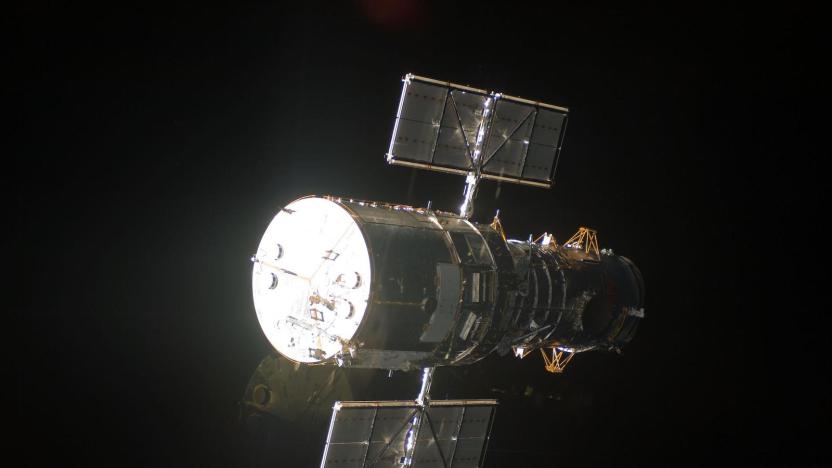
Hubble Space Telescope is in trouble after gyroscope failure
The Hubble Space Telescope has advanced our understanding of the universe immeasurably since it was first deployed to low Earth orbit in 1990. It's impossible to overemphasize just how valuable it has been to scientists. But now, the space-based observatory is in trouble. The NASA Hubble Twitter account announced that on Friday, the Hubble Space Telescope went into safe mode after a gyroscope, used to point and stabilize the observatory, failed.
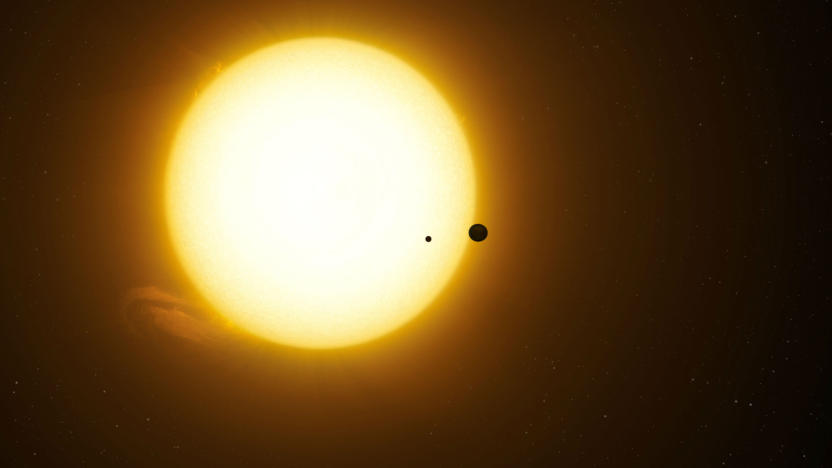
Researchers may have found the first signs of an exomoon
Over the last couple of decades, we've spotted thousands of planets outside of our solar system -- Kepler alone has confirmed more than 2,600. But so far, we've haven't found any exomoons, despite the likelihood of them being prevalent in our galaxy. Because moons tend to be much smaller than their planet counterparts, they're harder to spot, which is probably why we have yet to find any. However, researchers at Columbia University have now found evidence of what might be an exomoon located thousands of light-years from Earth.
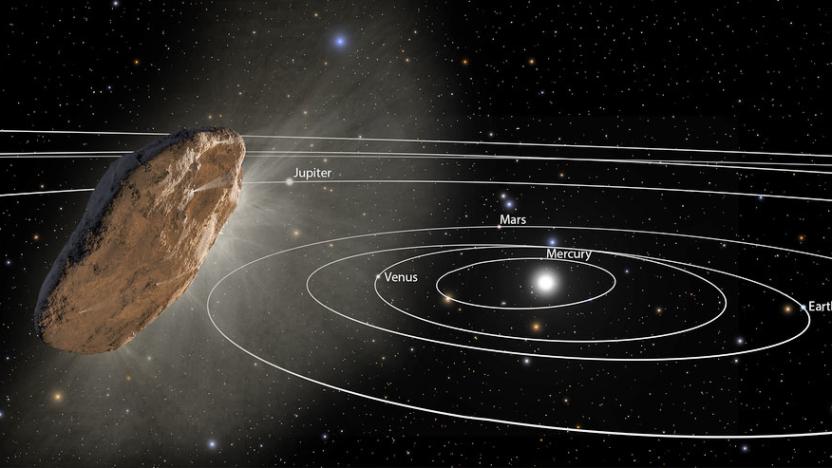
Turns out the interstellar object ‘Oumuamua is a comet after all
Last October, researchers spotted a long, skinny object speeding through our solar system, and they initially pegged it as a comet from another solar system. But as they continued to observe the object, dubbed 'Oumuamua, its properties -- namely a lack of gas and dust surrounding it -- pushed it into the asteroid category, instead. Asteroids are mostly rock, while comets contain ice that becomes visible as it's vaporized into gas and pulls dust off of the comet's surface. However, researchers have kept their telescopes pointed at 'Oumuamua and additional observations have now earned the object a comet label once again.

Scientists validate theory of relativity on galactic level
Einstein's theory of general relativity is rather important when it's crucial to the modern understandings of the universe and technology like satellites. But does it hold up with something as vast as a galaxy? Thanks to researchers, we know the answer is "yes." They've conducted a test that used two comparatively distant galaxies, one in front of the other, to show that relativity checks out.
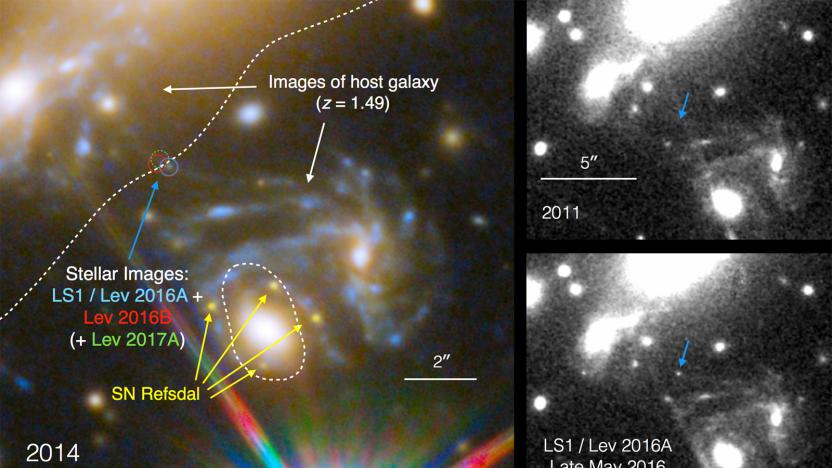
Hubble space telescope spots the farthest known star
Astronomers have spotted numerous extremely distant galaxies, but spotting individual stars is understandably much more difficult unless they go supernova. Sometimes, though, cosmic alignment works in their favor. Researchers using Hubble space telescope data have spotted Icarus (aka MACS J1149+2223 Lensed Star 1), a blue supergiant whose light was emitted when it was 9 billion light years away from Earth -- over 100 times farther than the previous record-setter. They captured the star thanks to a rare, ideal gravitational lensing effect where the star's light was magnified not only by the gravity of an in-between galaxy cluster 5 billion light years from Earth, but by a star inside that cluster. All told, the lensing magnified Icarus 2,000 times.

First observed interstellar object is a speedy, cigar-shaped asteroid
Last month, astronomers running the Pan-STARRS 1 telescope in Hawaii spotted an intriguing object moving through our solar system and it became clear pretty quickly that the object, whether it was a comet or an asteroid, had come from outside of our solar system. Now, in a paper published this week in the journal Nature, researchers have described the interstellar visitor, dubbed 'Oumuamua, including its peculiarities as well as its similarities to objects originating in our own solar system.
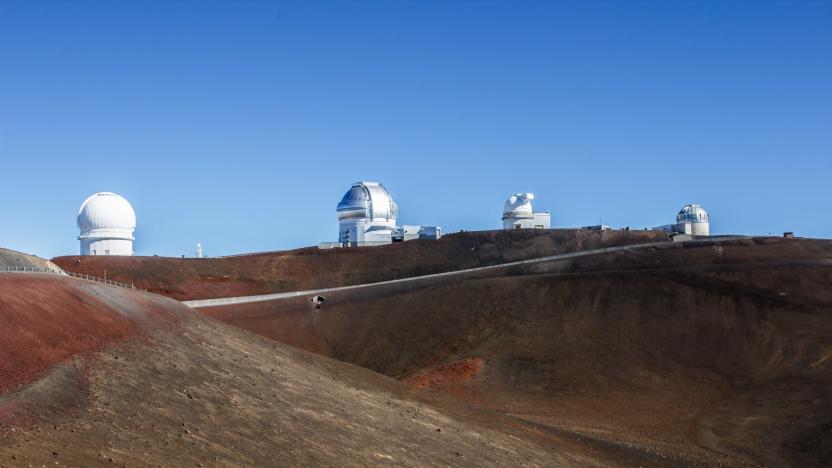
Long-delayed Thirty Meter Telescope gets the go-ahead, for now
Building the world's largest telescope has proven to be even more difficult than one might expect. The Thirty Meter Telescope, which has been planned for construction atop of Hawaii's Mauna Kea, has hit a number of snags, but it got a major approval this week. The state's land board granted the project construction approval in a 5-2 vote, but those that have challenged it from the beginning plan to keep fighting.
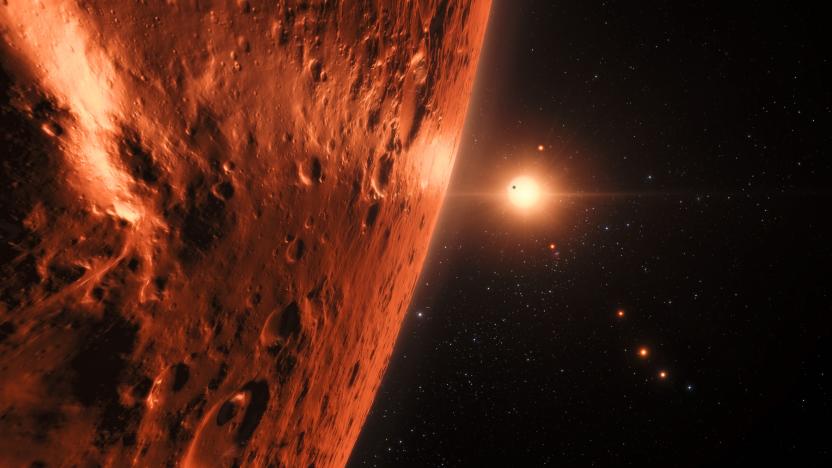
Hubble telescope spots evidence of water on Trappist-1 planets
Scientists say it's possible five Earth-sized planets orbiting Trappist-1, an ultra-cool dwarf star located 39 light years away, contain "significant amounts of water." An international team of astronomers used the Hubble Space Telescope (HST) to measure the amount of ultraviolet (UV) radiation hitting all seven Trappist-1 exoplanets. The phenomenon is important because low-energy UV radiation can break down water molecules into hydrogen and oxygen; higher levels heat the upper atmosphere to the point where the two elements can escape. UV radiation is therefore useful in modelling water loss and atmospheric stability in distant planets.
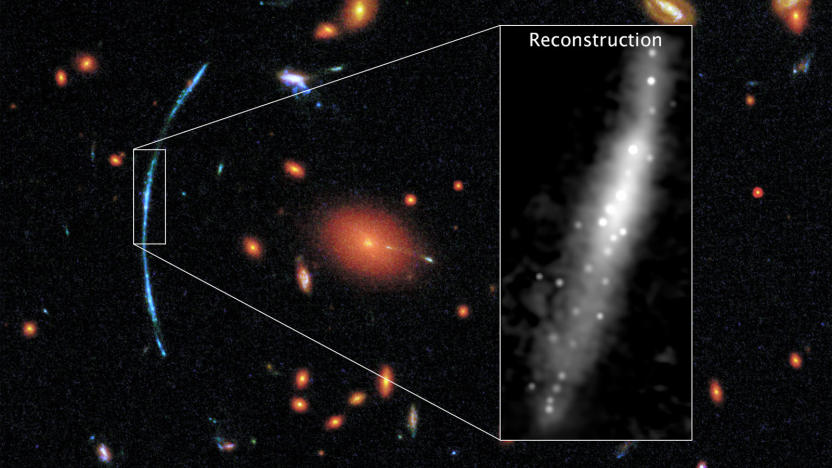
Early universe 'fireworks' challenge notions of how stars form
At the rate things are going, astronomers may have to toss out the rule book for galaxy formation. Researchers using the Hubble Space Telescope have discovered an ancient galaxy (formed 2.7 billion years after the Big Bang) with two dozen star nurseries measuring 'just' 200 to 300 light years across. That sounds big, but scientists had expected that early universe star-forming regions had to be enormous, at 3,000 light years across or larger. Here, they're so tightly packed together that NASA researcher Jane Rigby likens them to "fireworks" popping off at a cosmic scale.
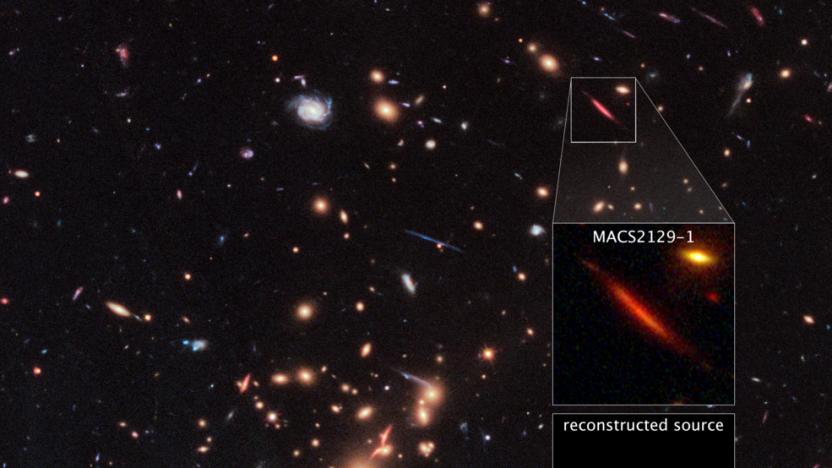
Current theories might be wrong about how a galaxy evolves
With the help of NASA's Hubble Space Telescope, researchers made a surprising discovery that goes against what we thought we knew about old galaxies and how they evolve. Our galaxy, the Milky Way, is a disk-shaped spiral galaxy. Typical of this shape of galaxy, the Milky Way's stars move around with predictable regularity and new stars are being formed throughout. From astronomers' observations, older galaxies that have stopped producing stars take on an elliptical shape with star motions that are unpredictable, different from the Milky Way and other younger galaxies.

Stars can turn into black holes without a supernova
As a rule, astronomers believe that stars have to explode in a supernova before they collapse into black holes. That violent death is always the cue, right? Not necessarily. Researchers have spotted a massive star 22 million light years away, N6946-BH1, that appears to have skipped the supernova step entirely -- it brightened slightly and just disappeared. Checks have ruled out a dimmed star or dust. And this probably isn't a one-off incident, either. Ohio State University's Christopher Kochanek tells NASA that 10 to 30 percent of massive stars might die in failed supernovae.

Hubble telescope spots 'runaway' black hole
Astronomers using NASA's Hubble Space Telescope have observed a supermassive black hole with a mass one million times that of our Sun hurtling away from its parent galaxy. It's the first confirmed case out of several suspected "runaway black holes," which required an immense amount of energy to get launched from the center of its galaxy. How much?
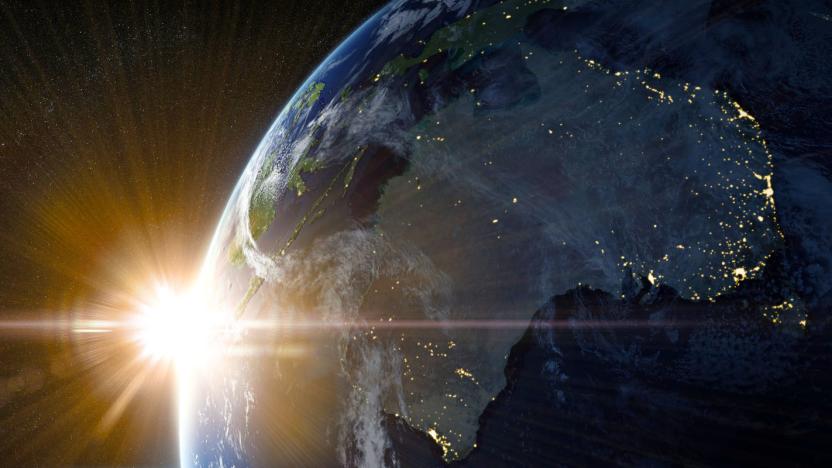
NASA plans to make a telescope out of the Sun
As NASA astronomers peer further and further into space, they require ever larger and more powerful telescopes to do so. That's why one team of researchers from the Jet Propulsion Lab have proposed using the biggest object in our solar system, the Sun, as a cosmic magnifying glass.
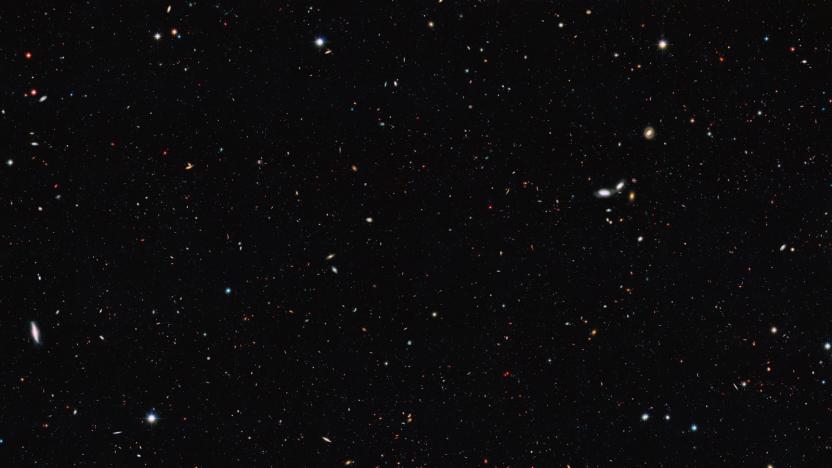
Universe may hold 10 times more galaxies than once thought
The observable universe was already incomprehensibly big, but it now looks to be even bigger. Astronomers have determined that are likely about 10 times more galaxies than previously thought, or between 1 trillion to 2 trillion. We just don't have the technology (or physical proximity) to detect them all, according to the researchers. They reached the conclusion after converting Hubble Deep Field images into 3D to study the number of galaxies at a given point in the universe's history, and using mathematical models to infer the possibility of galaxies that we haven't spotted. Simply speaking, the volume of galaxies seen over time doesn't make sense unless there are many we aren't aware of.

NASA observes possible water geysers on Europa
Hubble's extended mission continues to pay off: NASA announced today that a team of astronomers using the space telescope have spotted what appear to be plumes of high-altitude water vapor spewing from the icy surface of Jupiter's moon Europa. Researchers have long believed that Europa holds a global ocean beneath a thick, potentially miles-deep, layer of ice, but the new observation indicated it could be possible to sample the ocean without landing or drilling on the moon itself.
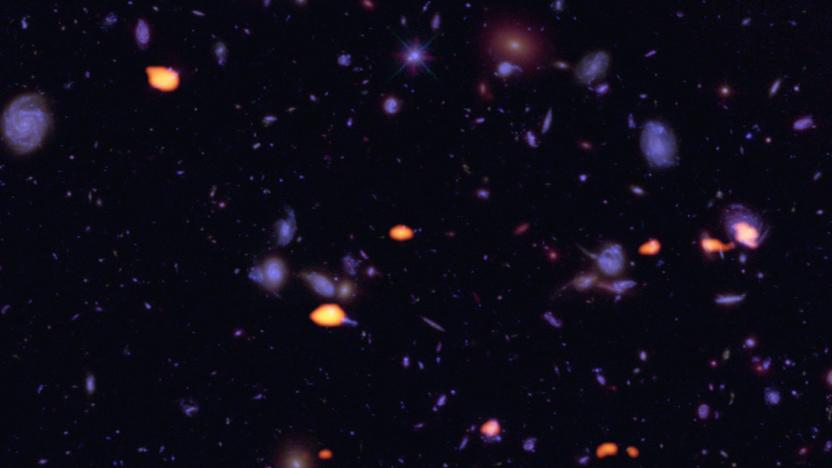
Hubble study helps explain the heyday of galaxy formation
The Hubble Space Telescope still isn't done giving up secrets of the early universe. Researchers using the Atacama Large Millimeter/submillimeter Array (ALMA) have discovered that a patch of 10 billion-year-old galaxies in Hubble's Ultra Deep Field view holds gas that helps explain the "Golden Age" of galaxy and star formation. This first completely "blind" (that is, not expecting anything) 3D millimeter wavelength search of the old universe turned up galaxies with an abundance of carbon monoxide, a hint that they were rich in the molecular gas key to creating stars.

Hubble discovers a new 'dark vortex' on Neptune
Researchers gazing through NASA's hardworking, time-bending Hubble space telescope spotted a new storm brewing on Neptune last month. As the space agency confirmed today, research astronomers analyzing telescope data at the University of California at Berkeley discovered a new "dark spot" on the planet — only the third since Voyager 2 first spotted one in during its 1989 flyby.

Faintest known galaxy could shed light on the early universe
Scientists have only just started finding extremely faint galaxies. However, they've already topped themselves by discovering the faintest known galaxy to date... and it might just provide insight into the universe's early days. Found through gravitational lensing, the galaxy is both supremely ancient (13 billion years old) and extremely tiny (just 0.0001 percent the size of the Milky Way). In other words, it's a textbook example of the dwarf galaxies that researchers believe were key to re-ionizing the universe and taking it out of the lightless "dark ages." With enough study, it could help explain what triggered that ionization and fill in one of the gaps in our understanding of existence.

NASA finds 'super-Earth' with an atmosphere it can analyse
Astronomers at NASA, working with the ESA and the University College London, announced Tuesday that they have discovered a "super-Earth" exoplanet with an atmosphere, that, for the first time, they can analyse. The Hubble telescope's Wide Field Camera 3 (WFC3) first spotted the planet, dubbed 55 Cancri e, which is only about 40 light years away. Super-earths are simply rocky planets that are bigger than the Earth -- in this case, eight times bigger. They're widely believed to be the most common type of rocky planet in the galaxy.





